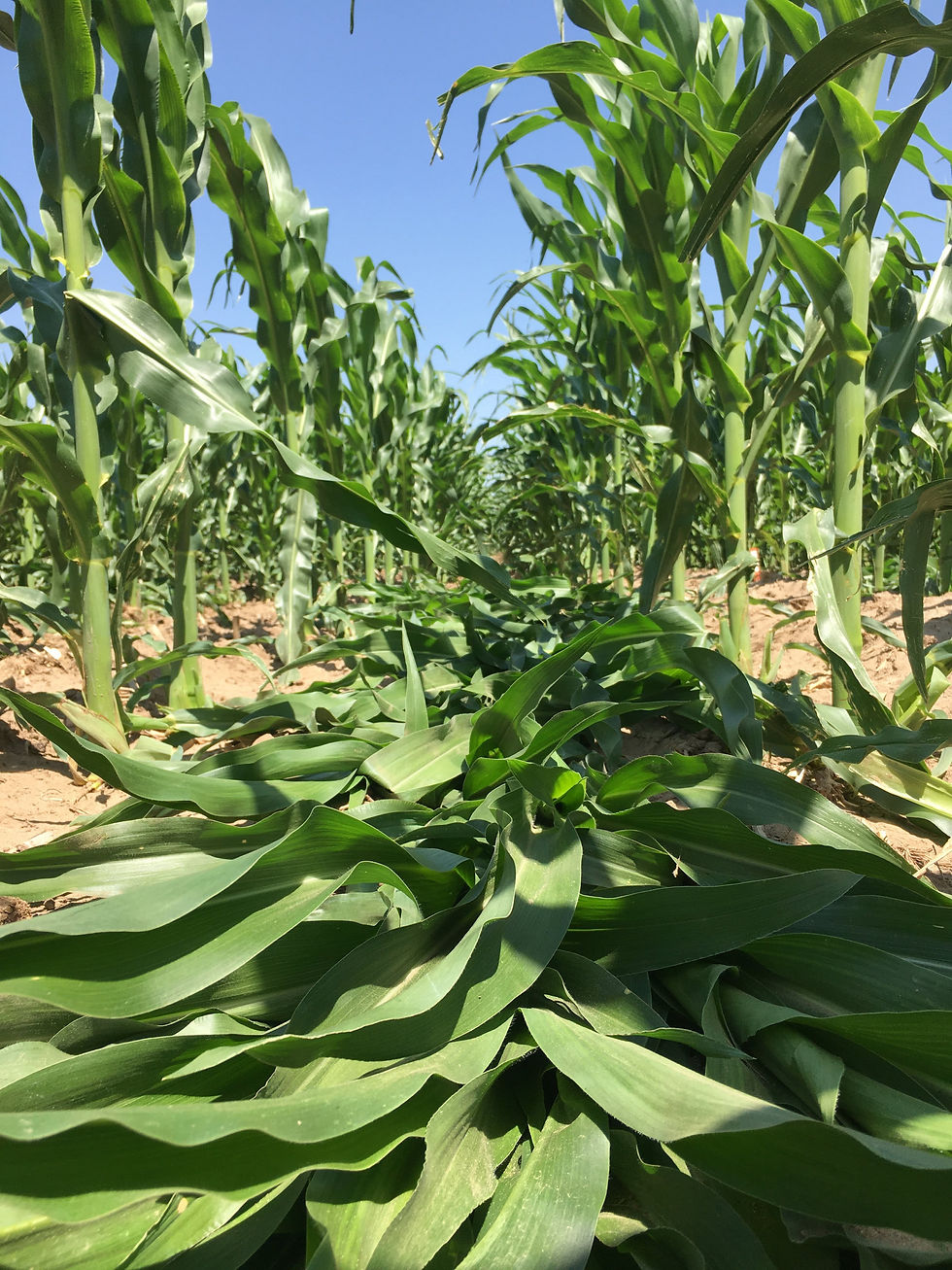The (Tiller) Terminator
- Rachel Veenstra

- Aug 19, 2020
- 2 min read
Before and after pictures of our tiller removal plots in Goodland, KS!
It's been a crazy couple months for the Corn Tillering project here at Kansas State University! We've done some really intense makeovers in several of our plots across the great state of Kansas, and I wanted to talk about WHY we're doing that. (And also show all of the before and after pictures, because this stage of the project is one of my favorites.)
Six of our nine field experiment locations this year include a tiller removal plot treatment - that is, half of the plots are selected to have tillers removed, and half of them are selected to have tillers remain intact.
Why do we remove tillers from half of the plots?

To make a long story short, we remove tillers from half of the plots to directly compare yield and biomass outcomes with AND without tillers involved.
It's obvious that tillers bring additional competition to the main plant, because all of these new shoots are now needing, seeking, and using all of the same available resources - water, nutrients, light, etc. If the plant has abundant resources, this should not present a problem. HOWEVER, if water is lacking or soil fertility is subpar, tillers could spell trouble. This situation is part of what we hope to capture in our dryland environments.
When do we remove tillers from our plots?

A lot of thought went into the logistics of this treatment "application". V10 (main plant tenth-leaf development stage) was targeted as the prime stage for tiller removal for our purposes.
This decision was made for two main reasons: 1) the growing point has likely begun to elongate in tillers by this point, meaning those that are broken off will likely NOT grow back, and 2) other studies reported corn tiller removal between development stages V7 and V16.
As you'll recall, the growing point in the main stalk of corn begins elongating around stage V5, but because the tillers appear later and are delayed in their development, this process takes place when the main plant is more developed.
It was very important for us to have successful tiller removal in one attempt, because the logistics of making multiple trips to our fields in the western part of the state to "clean up" tillers that grew back were not feasible.
Where do the tillers go after removal?

Several questions have been directed towards this topic, and for good reason! We leave the tillers out in the plots to avoid removing anything from the plot. The plant material we leave may look like a lot, but it’s basically all leaves and quickly shrivels up in the sun! (Before and after photos have to be fast for this reason)
With the plant roots as deep as they are and the leaf canopy closing in, this extra plant matter on the ground does not make a difference for the plants still standing. To the right is a picture from 2019 that shows what's left of tillers in later growth stages. Notice that the amount of ground covered by these crunchy tillers is MUCH less than in the initial removal pictures!
Hopefully this post answered some questions about our tiller removal process! My knees are just glad to be done with it for another season. #GradSchool















Comments